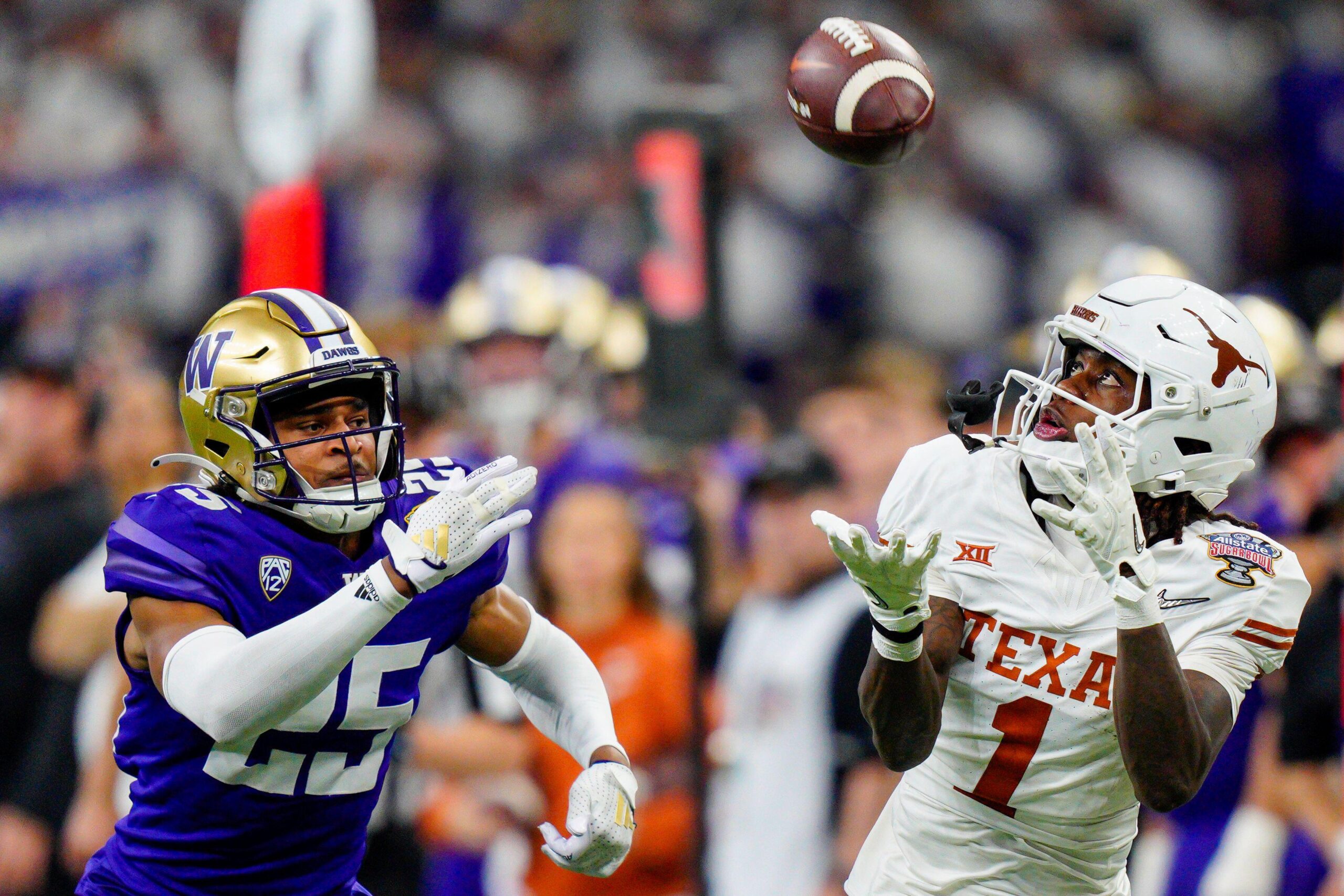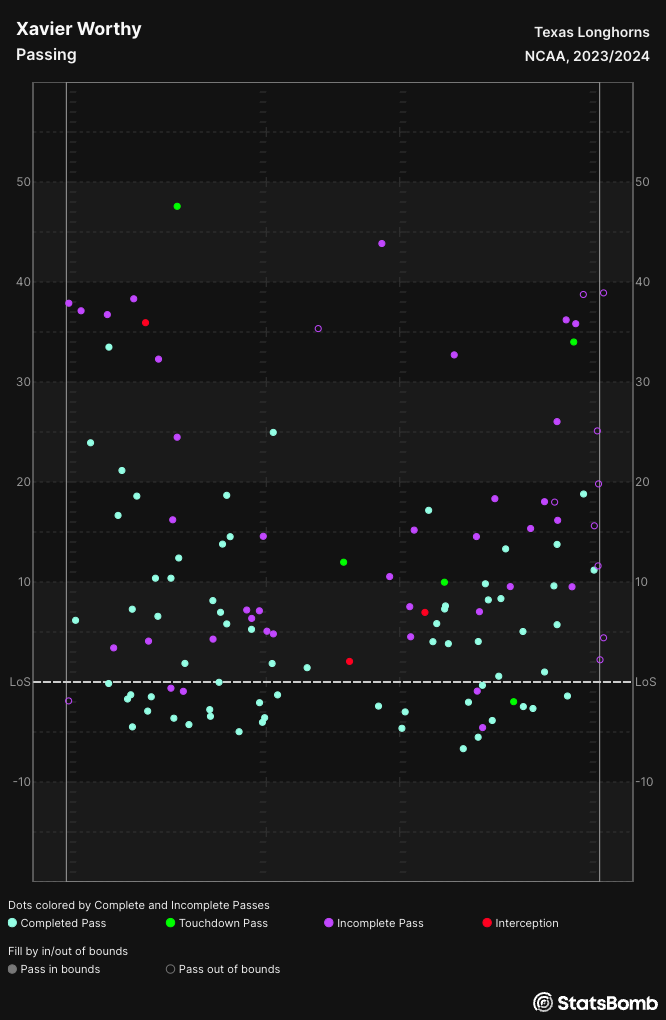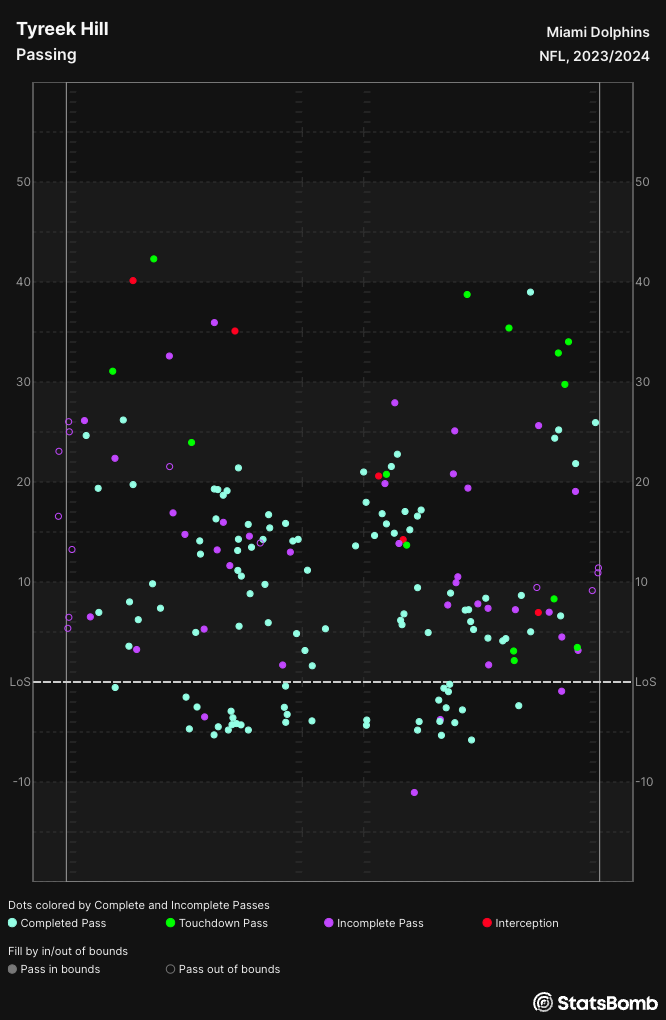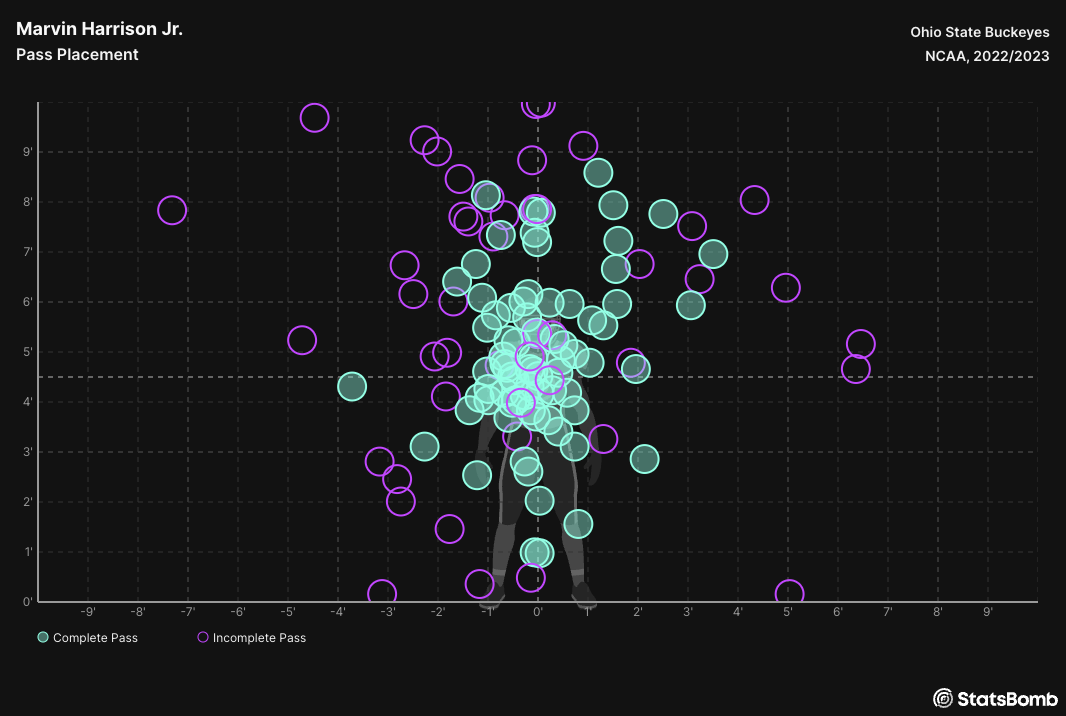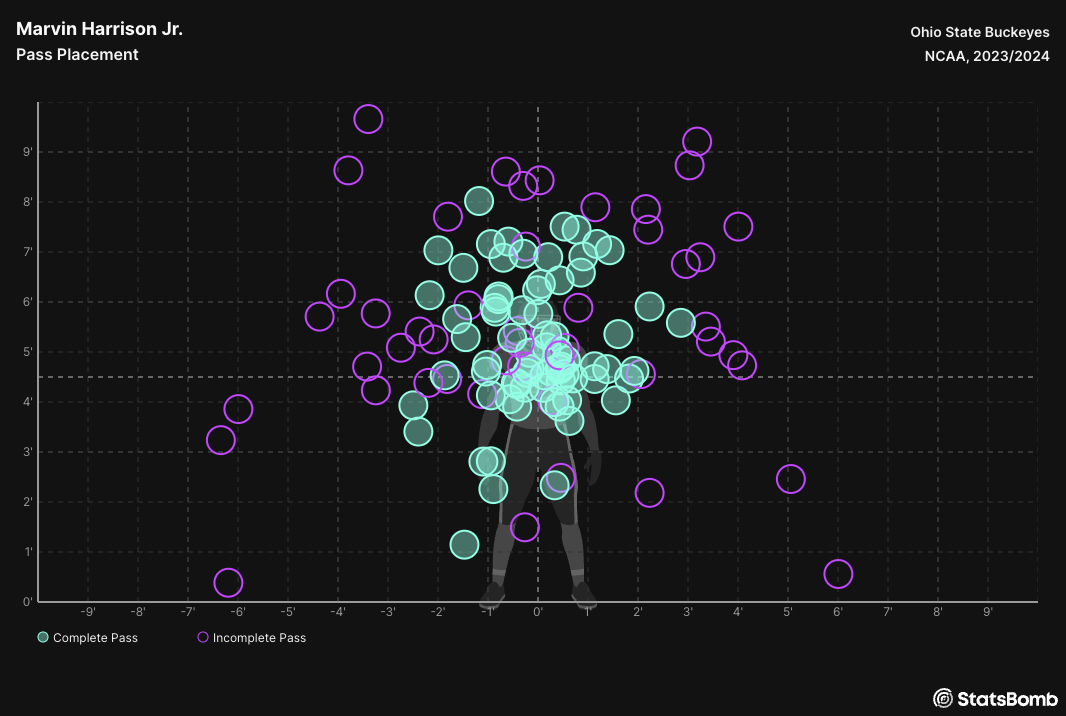We are in the golden era of early career success for wide receivers. In the last 4 seasons, we have had 3 of the top 4 receiving yards seasons for a rookie. In 2020 Justin Jefferson had 1,400 yards receiving and 7 TDS. In 2021 Ja’Marr Chase had 1,455 yards and 13 TD’s. Last season Puka Nacua eclipsed them both and set the NFL Rookie record for most receiving yards in a season with 1,486 yards. Bonus points for any reader who knows who the old record holder was without looking it up.
Some guy named Bill Groman in 1960 had 1,473 yards, in just 14 games! Statistical anomalies like Groman’s 1960 season aside; the combination of modern passing offenses, receivers who are better prepared out of college, and rookies being put into more situations has led to some impressive seasons lately. Ohio State teammates Chris Olave and Garrett Wilson both had over 1,000 yards. A Tight End even got in on the 1,000-yard rookie receiving club when Kyle Pitts had 1,026 yards in 2021. With this in mind, it is understandable that there are so many Wide Receivers being discussed as potential 1st round picks.
Cream of the Crop
Instead of going player by player, let’s take a look at the six players who are mostly commonly being talked about as 1st round wide receivers: Marvin Harrison Jr, Malik Nabers, Rome Odunze, Brian Thomas, Xavier Worthy, and Adonai Mitchell. Partly, I just wanted an excuse to show off our new player comparison tool, but this does a good job of highlighting similarities and differences between a group of selected players.
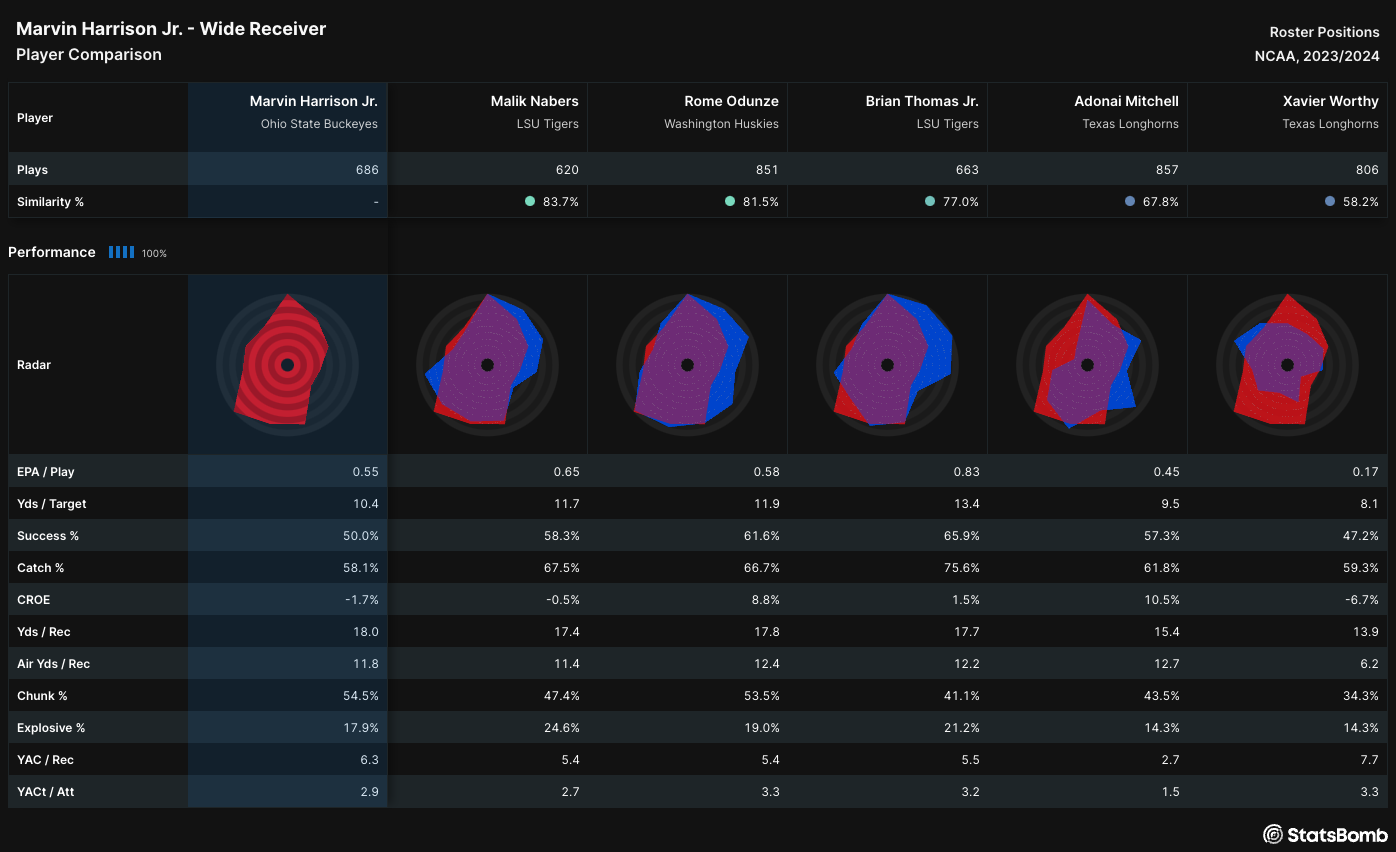
When the performance radar charts of the players being compared show significant overlap, it indicates a strong similarity between them in those metrics. Conversely, areas with less overlap highlight notable differences. The metrics and values which dictate the shape and size of each player's radar can be explored in more detail via the following close-up of Marvin Harrison Jr’s radar.
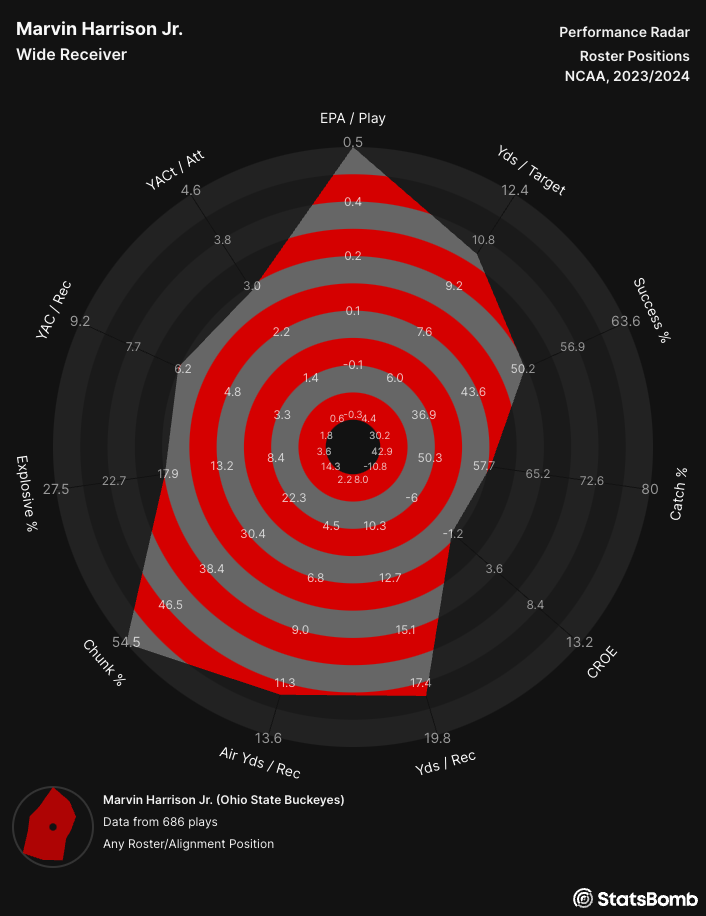
As expected, the radars show these players were very productive last season, and there is quite a bit of overlap in their performances. These players were the best in college football last season, and all had productive years. But there are a few interesting points in some of the radars that are worth exploring further.
Xavier Worthy
Xavier Worthy’s radar looks the most unique of these WRs. He has the lowest air yards per reception, by a long shot. His 6.2 air yards per reception is not only about ½ what the other top WRs is, but it ranks 251st out of 303 WRs who played at least 400 snaps. Over ½ his catches were within 5 yards of the line of scrimmage. He makes up for the low air yards per reception by what he does after he catches it, averaging a remarkable 7.7 yards after the catch.
Worthy ran the fastest 40-yard dash ever at the combine. The main way Texas utilized that speed was in those short targets like screens and in the quick game. It’s easy to see a player who runs fast, think of the Miami Dolphins (who did send a bunch of people to Texas Pro Day on Wednesday), and see Worthy as an automatic fit there. The Dolphins offense has unleashed Tyreek Hill and his track-like speed but in a very different way. Below are target maps for both Hill and Worthy. Hill has his share of screens but stretches the field vertically much more than Worthy. If Worthy wants to have a long NFL career, and be a top WR in the league like Hill, he needs to expand his route tree and become a more well rounded receiver.
Brian Thomas/Malik Nabers
Brian Thomas and Malik Nabers are poised to be the 4th set of Wide Receivers from the same school taken in the 1st round in the past 5 drafts. Their radars look pretty similar with Thomas having a few slightly higher metrics in things like catch % (top 15 in the country last season), yards per reception, and air yards per reception. However, a significant differentiator between them—on-field speed as opposed to measured testing speed—doesn't reflect in our radar charts. This shift towards valuing real-game speed over traditional speed tests is captured through our physical metrics tools, underscoring a pivotal trend in player evaluation."
First, a little background on what we are doing with physical metrics. For every play, we collect a player's speed and acceleration for every frame and then surface their top speed and top acceleration for that play. We take these speeds and accelerations and work to contextualize them into some sort of football term for different positions. For the top 6 WR in the draft, Malik Nabers has the fastest average top speed per play, and the 2nd fastest average top acceleration per play (Speedster Xavier Worthy was 1st). Brian Thomas Jr. was 6th in each. Our contextual physical metric for receivers is top speed on deep routes (go, post, corner). Nabers was first in average top deep route speed as well. Thomas was again 6th.
Production matters, but physical traits matter also, and this is a reason to keep an eye on Nabers to be one of the first WRs off the board on draft night.
Marvin Harrison Jr.
Harrison has been the consensus number 1 WR in this year's draft for years, and would have been the first WR taken in last year's draft if he had been allowed to declare early. A recent round of the pre-draft wildness has challenged that notion. Although it happened after the season and doesn’t seem to have much to do with how he actually played, let’s take a look at his past two seasons to see why some of this discourse might be happening.
Harrison had very similar production over the past two seasons. His EPA/play dropped a little bit in 2023, his catch % and explosive play % were nearly identical, and his YAC improved greatly. One of the biggest differences however was who was throwing him the ball. Last season CJ Stroud had one of the better rookie QB seasons in NFL history, and was Harrison’s QB in 2022. Kyle McCord stepped in and had a shaky 2023 season leading to his eventual transfer out and to Syracuse. Harrison's catch placement charts for 2022 and 2023 could not be more different. While Stroud was mainly on target horizontally, he threw a lot of jump ball passes trusting Harrison's athleticism to go and get the ball. Kyle McCord sprayed passes horizontally and threw off-target a lot more.
I expect by the time the Draft comes around, we will all be back on board with Harrison being the #1 WR, but the Draft is unpredictable. You never know!
Days 2 & 3
If you pass on a WR in the first round, there are still some good options later in the draft. The first one I want to focus on is JJ McCarthy’s top target, Roman Wilson. Roman Wilson got overlooked throughout the year because of Michigan’s reliance on the running game, but he quietly put together a really good season. He also ran really well at the Combine; running a 4.39 40. This speed showed in our physical metrics as he had the 2nd fastest average deep route speed (top speed on “deep” routes: Go, Post, Corner) of qualifying WRs. For those of you who are wondering, Isaiah Bond was number 1. Also of note, fellow Crimson Tide WR Jermaine Burton was 3rd overall, so I can see why Alabama was big fans of the “chuck and pray” offense last season. Roman Wilson also showed the ability to get open in all areas of the field, as shown by the heatmap of his targets below.
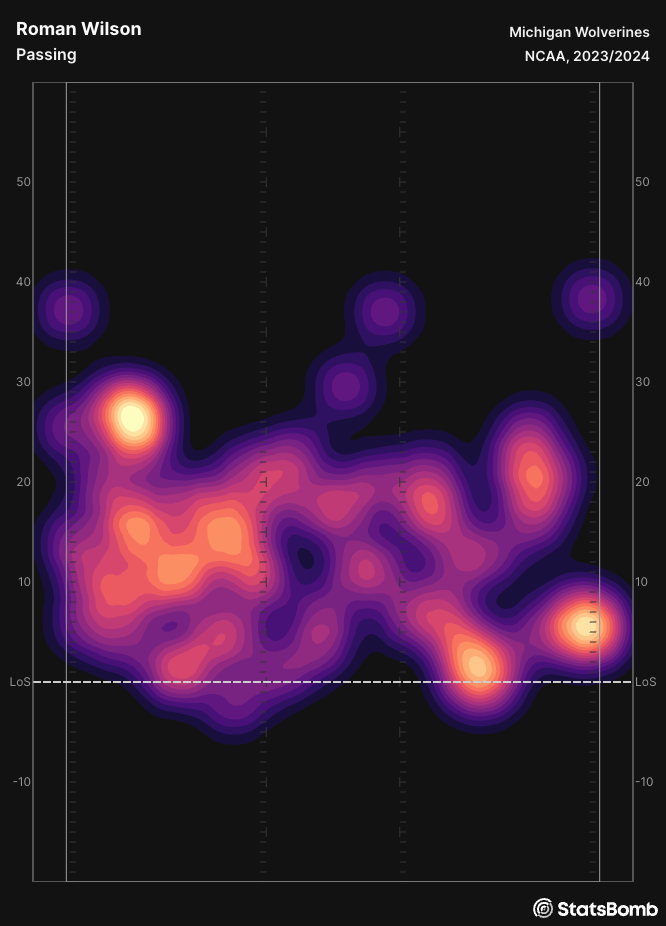
Ladd McConkey
Fun trivia question for the reader: which Georgia player led the team in EPA/target, Yds/target, explosive catch %, and catch %? It’s not the potential top 10 pick Brock Bowers (who is great, don’t get me wrong. I can’t wait to write about the Tight End class). You may have taken in the context clue of the section title, but if you haven’t guessed yet, it was Ladd McConkey.McConkey had a good season and is a projected day-3 WR. Based on traits and production though, his most similar WR comparison from last season is Brian Thomas. Keep an eye on Ladd McConkey as a potential late-day steal.
Conclusion
As mentioned above, Puka Nacua set the record for NFL receiving yards by a rookie last season. Rashee Rice and Nate Dell had great seasons as later WR’s as well. However, usually, the higher draft picks have better chances of producing right away. Ja’Marr Chase, Justin Jefferson, Garrett Wilson, and Chris Olave all had great rookie years as 1st round picks. The group of 1st round picks has a chance to be great, but keep your eye on some of the later draft picks as well to have a chance to make their mark early.
Matt Edwards
Head of American Football Analysis - StatsBomb
matt.edwards@statsbomb.com
@thecoachedwards on X (Formerly Twitter)

